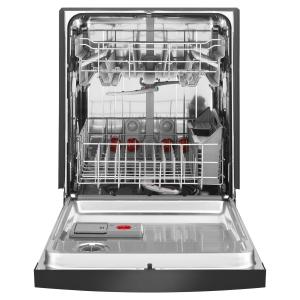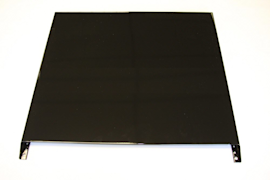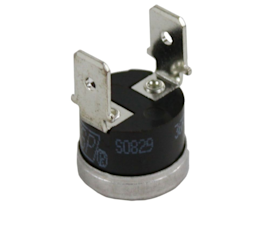Dishwasher common questions


These common questions about dishwashers are the ones our experts hear the most often from our customers. You might also find the help you need by checking the common symptoms and solutions for dishwashers. When you’re ready to make a repair, search your model number to find replacement parts. Sears PartsDirect has the parts you need, no matter where you bought your dishwasher.
My dishwasher won't start. What could be the problem?
Look for a blinking light on the electronic control panel. A blinking light signals an error code or a defective button on the control panel. Check our error codes for an explanation. If the control panel is defective, replace it.
Something could be stuck under the mushroom-shaped float in the bottom of the tub, making the dishwasher think there’s too much water in the tub. The float rises with the water in the tub; if the float rises too high, it trips a switch to shut off the flow of water into the tub. If an item is stuck under the float, the dishwasher won’t fill.
Also, make sure there’s power to the dishwasher. If the electronic control panel isn’t lit up, check the house circuit breaker that powers the dishwasher. In many homes, a wall switch beside the sink shuts off power to the dishwasher. Check that the switch is on.
How can I make my dishes dry better?
Use rinse aid, which makes water sheet off the dishes so they dry better and get fewer spots. If you’re already using rinse aid, check that the dispenser is full.
Low water temperature can also cause poor drying. For best drying, set your hot water temperature to at least 120 degrees F.
Plastic dishes don’t retain heat, so they don’t dry as quickly as glass and metal dishes.
Why are there white spots on my dishes?
If the spots rub off easily using your finger, the spots are detergent residue. To remove detergent residue, simply rinse the dishes and wipe them dry. To prevent the detergent residue, adjust the amount of detergent you used.
Spots that won’t rub off easily are mineral deposits from hard water. Soak spotted glassware in white vinegar to dissolve the minerals or use a dishwasher product designed to remove spotting. To prevent hard water spots, consult your owner’s manual for how to adjust the amount of detergent to suit your water hardness.
Regardless of the cause of the spots, you can reduce spotting by using rinse aid and water that is at least 120 degrees F, so dishes dry faster, giving spots less of a chance to form.
Why is the Clean light flashing on my dishwasher?
The Clean light signals an error code on many models of Kenmore and Whirlpool dishwashers. If it blinks 7 times, pauses and repeats, the control detects a problem with the heating circuit. Check the heating element. If the heating element is okay, try resetting the code using a key sequence such as Heated Dry – Normal Wash – Heated Dry – Normal Wash to start the diagnostic test mode. The control steps through a 10-minute test to ready the dishwasher for use. Monitor the next few dishwashing cycles. If problems continue or the code returns, you may need to replace the heating element.
On the most current Kenmore and Whirlpool dishwasher models, the Clean light blinks in a pattern to signal error codes. Check our error codes for an explanation.
If the Clean light or another light on the control panel is blinking fast and not pausing, a button on the key panel is stuck. The control panel for the dishwasher usually needs to be replaced.
Why does water leak out of my dishwasher door?
If water leaks from the door of your dishwasher, first check the rubber door seal around the opening to the dishwasher tub. A damaged door gasket seal can let water leak from the dishwasher door. Replace the dishwasher door seal if damaged.
Damaged spray arms can also cause water to leak out of the dishwasher door. A split or crack in a spray arm can create a wave in the water in the bottom of the dishwasher tub. The waves of water can slosh over the front lip of the dishwasher tub and leak out of the bottom of the dishwasher door. Check the spray arms for damage and replace if necessary.
A loose pump outlet can also create a wave inside the dishwasher tub that can cause a leak. If the screws that that hold the pump outlet on top of the dishwasher pump are loose, remove the bottom spray arm and tighten the screws.
How much detergent should I use in my dishwasher?
First, check the directions on the dishwasher detergent package for the recommended amount. Also check your owner’s manual for guidelines. If you have hard water, use more detergent for the best cleaning. If your water is soft, use less detergent.
Why is detergent left in the dishwasher dispenser cup?
Adding dishwasher detergent to a wet dishwasher dispenser cup makes the powder cake and stick in the dispenser. If the detergent dispenser cup is wet, dry it before adding powdered dishwasher detergent.
Improperly loading the dishwasher prevents spray from reaching the dispenser. Load the dishwasher according to the guidelines in your owner’s manual.
Improperly loading the dishwasher can also block the detergent dispenser cover from opening. When loading the dishwasher, don’t block the detergent dispenser cover from opening.
Why does my dishwasher fill with water even when it’s turned off?
Water can fill a dishwasher that’s not on if the water inlet valve leaks. To see if the inlet valve is the problem, unplug the dishwasher or shut off the house circuit breaker to completely disconnect electrical power. If the dishwasher still fills with water when the electrical power completely disconnected, replace the water inlet valve.
If the water stops filling the dishwasher tub when you disconnect electrical power to the dishwasher, the problem is probably with the timer or electronic control board. If your dishwasher has a timer, a contact in the timer may be stuck, causing the water inlet valve to get voltage constantly and open to let water in. Replace the timer if it’s defective.
If your dishwasher has an electronic control board, a relay on the electronic control board is stuck. Replace the electronic control board if it’s defective.
Why does my dishwasher cycle take so long?
Some dishwasher models take a long time because they pause during the cycle to heat the water. Check your owner’s manual for features and cycle times for your dishwasher model.
To minimize the time it takes for the dishwasher to heat the water to the target temperature, set the temperature of the hot water supplied to the dishwasher to at least 120 degrees. To check your hot water supply temperature, run the kitchen hot tap for one minute and then fill a glass with hot water. Measure the temperature of the water in the glass. If the temperature of the water is less than 120 degrees, carefully adjust your hot water heater to supply the 120 degree water to your kitchen tap and dishwasher.
If the long cycles aren’t caused by a water supply or water heating issue, the temperature sensor or an electronic control board could be defective. Replace the temperature sensor if it’s not detecting the correct water temperature. Replace the electronic control board if the dishwasher runs constantly and doesn’t advance to the end of the cycle.
Why won’t my dishwasher drain?
A clogged sink drain or garbage disposal prevents the dishwasher from draining. Clear the sink drain or garbage disposal if clogged.
If your dishwasher drain system has an air gap installed, check the air gap for a clog.
A clogged drain hose can prevent the dishwasher from draining. Pull the drain hose off of the garbage disposal or sink drain and check for a buildup of grease or debris in the drain hose. Clean or replace the drain hose if it’s clogged.
If the drain hose and sink drain are clear, check for a clog in the drain pump or the dishwasher sump.
If a new garbage disposal was recently installed, make sure that the knock-out plug for the dishwasher drain connection was removed from the garbage disposal so that the dishwasher’s drain path through the garbage disposal is clear.
Why won't the display light up on my Kenmore dishwasher?
On Kenmore dishwashers manufactured after 2008, a defective drying fan can cause the display to go blank or not light up. Unplug the dishwasher to disconnect power and then remove the outer door panel. Unplug the wire harness connected to the drying fan and reassemble the dishwasher. If the display works with the drying fan disconnected, replace the drying fan. If the display doesn't light up with the drying fan disconnected, have a service technician examine the dishwasher to determine the cause of the failure. The user interface control or electronic control board could be defective.
Why won't my dishwasher run after replacing parts to fix the F4-E1 error code?
The control prevents the dishwasher from starting when it encounters the F4-E1 error code. After replacing parts, run the diagnostic test cycle according to the directions on the tech sheet for the dishwasher to reset the control. After running the diagnostic test cycle, the dishwasher should operate normally.
How do I turn off the end-of-cycle signal on my Bosch dishwasher?
Open the door and press the On/Off button. Hold down the Auto button then press and hold the Start button until d: 00 appears then release both buttons. Press the Auto button until b: 02 appears then press the Rinse button until b: 00 appears in the display. Press Start to save the setting and close the door.
What does L mean on my Whirlpool dishwasher?
The L indicates that the control is locked. Unplug the dishwasher for 5 minutes, then plug it back in. The control should work normally after restoring power.
Most common symptoms to help you fix your dishwashers
Choose a symptom to see related dishwasher repairs.
Main causes: glass or popcorn kernel stuck in the chopper blade, drain line vibrating against the cabinet, debris in was…
Main causes: not using rinse aid, rinse aid dispenser failure, broken heating element, malfunctioning vent, drying fan f…
Main causes: damaged or stuck spray arm, leaking door seal, damaged door hinge, leaky heating element water seal, cracke…
Main causes: clogged kitchen sink drain, clogged drain hose, drain check valve damaged, drain pump failure, control syst…
Main causes: broken door spring, damaged or broken door hinge…
Main causes: broken door latch, tripped circuit breaker, broken heating element, faulty vent fan, sensor failure, contro…
Main cause: damaged rack height adjuster…
Main causes: improper loading, low water temperature, improper detergent dosage, detergent dispenser failure, spray arm …
Main causes: light switch beside the sink turned off, lack of power, bad dishwasher door switch, control system failure,…
Most common repair guides to help fix your dishwashers
These step-by-step repair guides will help you safely fix what’s broken on your dishwasher.

How to replace a dishwasher high-limit thermostat
Follow these steps to replace the high-limit thermostat in your dishwasher if prevents the heating element from heating.…

How to replace a dishwasher door outer panel
If your dishwasher door is dented or you want it to match your cabinets or other appliances, this guide shows how to rep…

How to replace a dishwasher thermal fuse
A completely dead control panel often indicates that the thermal fuse on the electronic control board is blown; follow t…
Effective articles & videos to help repair your dishwashers
Use the advice and tips in these articles and videos to get the most out of your dishwasher.

Get tips on completing essential holiday cleaning tasks to brighten your home.…

Learn about all the convenient features on our Sears PartsDirect website that make your parts purchases easier.…

Get answers to frequently asked questions about Sears and Sears PartsDirect.…
